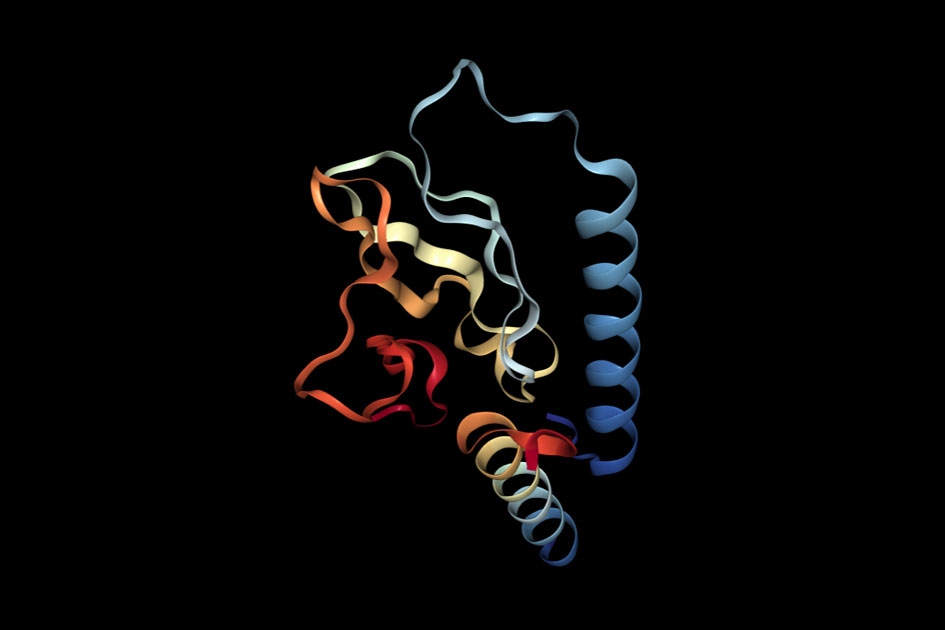Rewiring the Brain’s Addiction Circuit
Reed psychologists pinpoint a neuropeptide that blunts the craving for alcohol in rats.
Pleasure and pain, hunger and thirst, desire and craving. These fundamental sensations depend on a neurochemical signalling system of fiendish complexity. For several years, Prof. Paul Currie [psychology] and his students have explored how the neuropeptide ghrelin sharpens the craving for substances like alcohol and cocaine. Now they’ve shown that a complementary neuropeptide has the opposite effect—it blunts the craving and dials down the thermostat of need.
The neuropeptide is known by the unwieldy name of glucagon-like peptide-1 (GLP-1), and has long been known to play a role in satiety—the sensation of being full and not needing to finish that pancake. Last summer, however, psychology major Max Johnson ’20 discovered that injecting a synthetic version of GLP-1 into a specific region of the brains of alcoholic rats made them drink less booze—a finding that opens the door to a new strategy for treating alcoholism, addiction, and food disorders.
“This is a remarkable finding,” says Prof. Currie, who supervised the project. “This has the potential to profoundly impact the way we understand the underlying mechanisms of drug-induced euphoria or pleasure.”
GLP-1 is normally produced in the gut and then travels through the bloodstream to the brain. In the last couple of years, Prof. Currie and other researchers have traced the action of GLP-1 to the ventral tegmental area, or VTA, a part of the brain associated with the reward system. But some neurons in the VTA connect to a neighboring region of the brain called the nucleus accumbens. What would happen, Max wondered, if you used GLP-1 to stimulate neurons there?
With support from the Esther Hyatt Wender Psychology Fund, Max was able to conduct the experiment over the summer. He performed stereotaxic surgery on 28 rats, implanting a tiny tube to deliver the medicine into the precise location of the nucleus accumbens. Then the rats began a prolonged regime of heavy drinking. (Like humans, rats show an uneven fondness for alcohol: some can’t stand it, some drink in moderation, and some will keep on drinking so long as the bar stays open.) Finally, Max administered synthetic GLP-1 to the rats and monitored their intake. Sure enough, those rats drank less alcohol—and the more GLP-1 they got, the less alcohol they drank.
“For a long time, people thought GLP-1 was just about feeding,” Max says. “Now we’re realizing it plays a role in the reward circuits. Having a snack, drinking a beer—it turns out those urges are closely related. This research expands our concept of what is going on in alcoholism.”
For several decades, research into the brain’s motivation and reward circuitry spotlighted dopamine as the star performer; there are literally thousands of articles in the psychological literature focusing on dopamine’s role in alcoholism and addiction. The Reed research suggests that dopamine is only part of the story, however. Ghrelin and GLP-1 constitute an additional reward circuit, with ghrelin amping the system up, and GLP-1 cooling it down.
“This is not a magic bullet,” says Currie. “Obviously, treating alcoholism requires a holistic approach that includes cognitive behavior therapy, coping strategies, and so on. But this research suggests that we can take the edge off the craving. And not just for alcohol, but for binge eating, drug addiction, you name it.”
Max was able to pursue this question over the summer thanks to a generous gift from pediatrician Esther Wender ’59 to support student research in the psychology department. A growing body of evidence shows that undergrads who do research get better at overcoming obstacles, thinking independently, and understanding how knowledge is constructed. In the last decade, Reed has set out to provide students with more opportunities to pursue research in their sophomore and junior years; the skills they gain from these projects often prove invaluable for their thesis and their careers.
Esther was a philosophy major at Reed who suddenly realized she wanted to become a doctor halfway through her junior year. It was too late to change her major, but she took as many courses in math and science as she could and wrote her thesis on the philosophy of science with Prof. Ed Garlan [philosophy 1946-73]. Other influential figures included Prof. Marvin Levich [philosophy 1954-94] and Prof. Marsh Cronyn ’40 [chemistry 1952-89]. “Reed was one of the most important experiences of my life,” she says. “I’ve always wanted to give back if I was able.”
For Max, the summer project was a transformative experience. “It was great to be in charge of my own project,” he says. “That really pushed me. I was excited to come into the lab every morning. I love doing neuroscience at Reed.”
Reed has developed a formidable neuroscience program over the years, building on outstanding faculty expertise in topics such as the genomic basis of behavior, the mindbending world of sensory substitution, craniofacial disorders, and the neural basis of appetitive disorders. Over the last decade, students have authored dozens of papers in prominent journals. In 2017, Reed launched a formal neuroscience major, becoming one of the first institutions in the Pacific Northwest to provide undergrads with a full immersion in the field.
Currie and his students are pursuing research on GLP-1 in search of a deeper understanding of the neural mechanisms that underlie alcoholism, addiction, and other substance-abuse disorders. For his senior thesis, Max is conducting a similar experiment with GLP-1 where the rats have to work harder to get alcohol. After Reed, he intends to do graduate work in psychology.
Tags: Academics, Cool Projects, Editor's Picks, Giving Back to Reed, Professors, Research, Students
